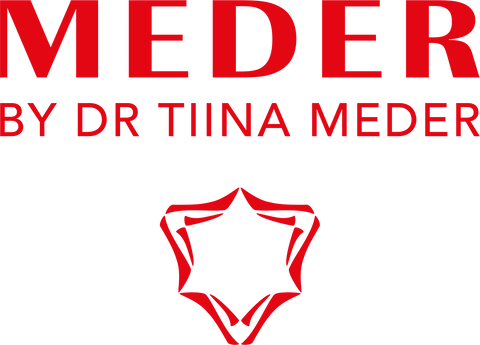WHAT CAUSES STRETCH MARKS?
The cells called macrophages and mast cells release enzymes destroying elastin fibres (or elastases) in response to some still unknown to us signal or stimuli. The destruction of elastin in the middle part of the dermis is followed by the reorganisation of other fibres, such as collagen and fibrillin, around this new “opening” where elastin is very fine and weak.
Collagen fibres grow thick and tortuous. They are full of white blood cells called lymphocytes and surrounded by dilated blood and lymphatic vessels. So, the dermis in a stretch mark looks very different – uneven and tangled, and we can see large red lines on the surface of the skin.
The cause of stretch marks is yet unclear, it is supposedly related to hormones, physical stretch and some unknown alteration of dermal tissue. The aim of stretch mark treatment is to reduce redness, swelling, inflammation and irritation in striae, improve hydration and increase elastin and collagen production.
Topical management options claiming to be effective are plenty: emollients, silicone gels, tretinoin cream, massage and chemical peels are the most popular. Unfortunately, the published results are very difficult to interpret with any certainty and none of these solutions can present real evidence to support their use.
Many physical treatments are offered today, but they have very little evidence of efficacy as well. Among them are broadband UV to re-pigment stria alba; light and laser therapy targeting vascular chromophores reported to reduce redness; fractional lasers that stimulate elastin and collagen production aiming to restore the dermis structure; and probably the most prospective micro-needling RF treatment which should, at least theoretically, improve the appearance of striae.
Microdermabrasion, galvanic current therapy and galvanopuncture, needling, micro-needling, derma rollers, mesotherapy, platelet-rich plasma injections, pulsed magnetic fields, LED and ultrasound devices are also in use in clinics all over the world.
It is safe to say that any kind of aesthetic device known to man is applied in hope to treat stretch marks somewhere in the world.
Black skin is for some unknown reasons more susceptible to stretch marks and they are more visible on dark skin making it harder for black women to adhere to the unrealistic beauty standard of smooth polished skin.
All that said, stretch marks per se do not warrant body shaming and subsequent excessive and sometimes painful corrective strategies. They don’t indicate any skin disease or condition that need dermatological intervention and are basically a harmless skin characteristic possessed by people of all ages, skin colours and body types.
Today many women actually wear them with pride as a sign of their motherhood. Even swimsuit and underwear ads are gradually starting to showcase models with un-photoshopped stretch marks on their bodies.
We welcome this turn towards skin positivity. There are many skin conditions that cause various degrees of discomfort to the patient and therefore require therapy, but stretch marks are not one of them.

